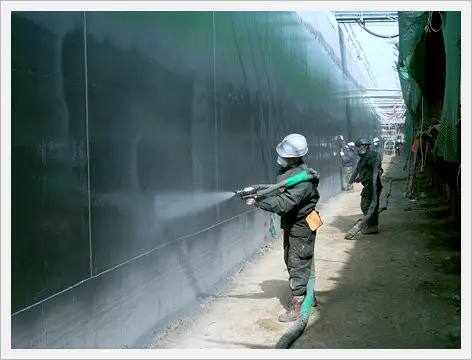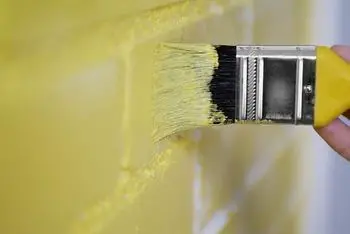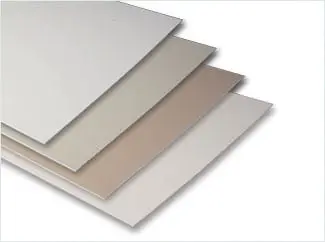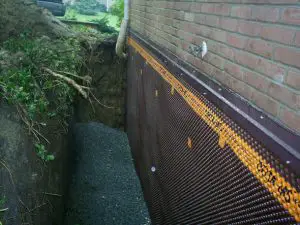Since most basements are below grade, it is best to waterproof them so that they remain dry and free of mold. At the start of the process to waterproof the basement, you must find out what is causing the moisture.
Once you have figured out the exact problem then you can decide on which waterproofing method is best. Remember that to properly seal a basement all cracks must be properly patched and thoroughly cured before applying anything to the walls. Cracks that are not properly sealed will still leak even after a coating is applied.
Methods Used For Waterproofing a Basement
There are many ways to waterproof a basement. Different basement waterproofing method requires different materials. Here are 5 common methods used to waterproof a basement. You might also be interested in our article on the top 5 waterproofing products.
#1 Concrete Waterproofing Coating
This is a thick cement-like coating that will adhere permanently to concrete and masonry walls. It is applied using a heavy brush with natural fiber bristles. This cannot be used on surfaces that have been previously painted. It comes as a dry mix that you will add water to make the mixture.

#2 Silicate Based Concrete Sealer
These are also known as densifiers and can only be used for walls that have not been painted of sealed. The sealer will soak in and chemically react with the concrete or brick. It will form a hard surface that is waterproof. This sealer will not flake or peel and is paintable. The sealer needs to be applied using a brush, roller or sprayer. At least two coats are needed to achieve a good seal.
#3 Waterproofing Paint
This type of paint is an acrylic formula similar to regular wall paint. You will use a brush, roller or sprayer but it will be applied more thickly. One gallon of waterproofing paint will only cover about 75 square feet.

This paint can be applied over painted surfaces and is paintable once it has had time to cure. Curing time is about five to seven days.
#4 Plastic Panels and Sheets
These must be used in conjunction with interior basement drainage systems. The plastic panels and sheets do not prevent the water from coming through the walls, but it does keep the water from ruining things in the basement. The water runs through the walls, down the plastic and into a drainage system in the floor. The water is then pumped out using a sump pump.

#5 Exterior Waterproofing
This is the best way to waterproof a basement. This is also the most expensive option. Exterior waterproofing involves excavating around the house all the way to the bottom of the foundation walls. Once the excavation is complete, a waterproof coating is applied.

After the coating has dried thoroughly, drainage panels are added to the top. The panels are used to provide a path for the water to flow away from the house. Those on a tight budget may not want to choose this option because it will cost several thousand dollars and generally requires a contractor to be hired to complete the job.

